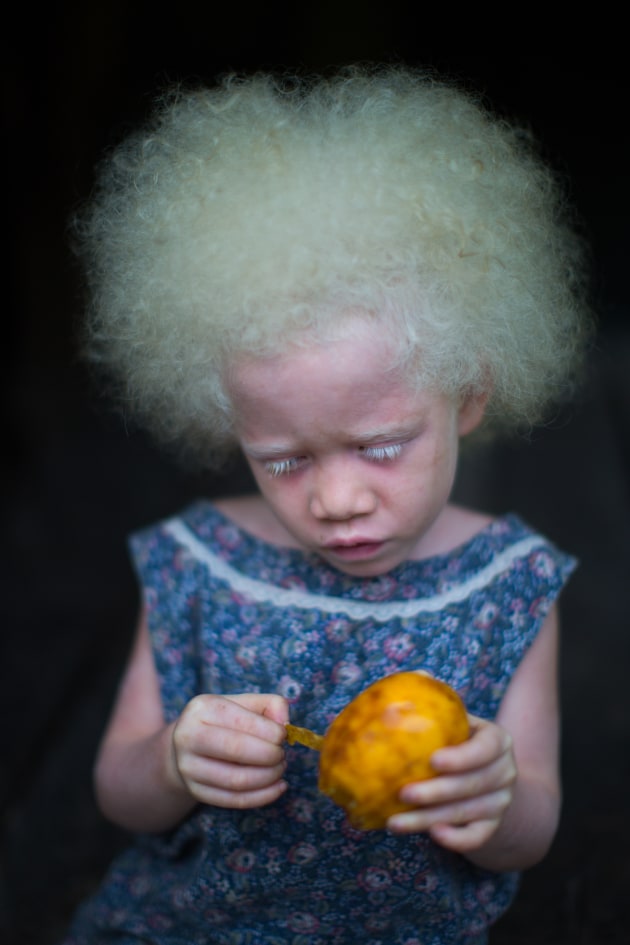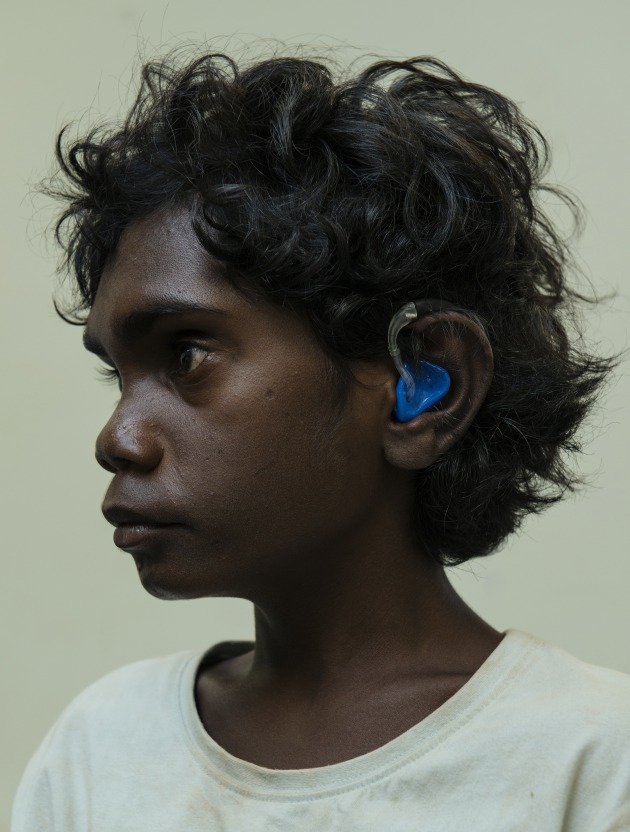Moving in the right direction
Professional photography is a much harder nut to crack than it was a decade ago. Technology has allowed a flood of new hopefuls to enter the industry. And social media is changing the kind of work that’s hot. Raw, home-made images are seen as “authentic”, and right now authenticity sells. Directing is where the work is. And someone who can direct plus shoot stills has high value. Candide McDonald investigates.
While Australia’s ad spend increased by 2% in 2015 (Nielsen), the growth areas were radio, outdoor, cinema, and online/digital. Magazine and newspaper advertising fell. Marketing has its eyes on digital. Digital has its focus on video. And marketers have their focus on economy. It makes sense that the photographer-director is a growing trend.

A new role for a new environment
“The photographer/director combo is incredibly useful right now,” states young photographer-director, Ollie Ritchie. “The more skills you know, the more useful you are. More and more clients, brands, and companies are choosing creatives for their content who have larger skill sets. This allows them to output more work without the need for paying a large crew of people. It’s a win-win really, because the creative gets more money if they do all the jobs and, on the whole, the client pays less because there’s only one person they need to pay, rather than, say, six.”
“Photographer-directors are dominating the influencer market,” he adds. “And that’s such a fast growing area. If you can post a photo to Instagram and also create a film for YouTube, you’re hugely valuable to a company that’s looking to generate traffic to their service, product, or event. You can earn a living on YouTube and Instagram by doing this.”
Moving into directing was a natural progression for Daniel Max (Maxy). “Photography, for me, is about telling a story in a frozen moment. In directing, I’m doing the same, but with more imagery and actions, more pieces to arrange in the puzzle.”
It was a natural progression, too, for Andreas Smetana after working in stills for 20 years, although he had also recognised that clients were becoming favourable towards having a single creator for all the visual elements on their projects that were increasingly digital. And that recognition came from the fact that he was asked if he’d direct a number of times until he gave in. “I actually never thought that I wanted to be director,” Smetana admits. “I was nervous in the beginning to get into film, to be honest. But hey, that is life. That’s the fun part.”

Director: Andreas Smetana. Producer: Tim Berriman @ Flint Sydney.
In mid-2016, Smetana launched Flint – Australia’s first production company that represents high-end directors who are also photographers. “Film and stills seems to have been colliding in the market for some time now, and while I don’t like to be involved with anything that has the word ‘colliding’ in it, I saw an opportunity to make skills like mine useful,” he states. “In stills, I’ve always kept production in-house. I knew very quickly that for film I needed some heavy-duty production help and experience for me to grow. So I partnered with Tim Berriman, and Flint was born. I never felt it was a big deal. Rather it was a name change with more to offer. We now have dedicated print and dedicated film production, and Flint works closely with a group of great guys who shoot both. It’s done fantastically well so far,” Smetana explains.
Is being a photographer-director production company a valuable USP? “We’re not hooked on it,” Smetana notes, “but it was a great starting point – to make a point. There are more important things for clients than working out someone’s USP. Agencies want great work and they want to work with people they trust, and people who work hard on the project. Clients want good work at a fair price. Having said that, I think it’s a sign of the times and it makes very clear sense that some photographers will make good directors. Having one talent across both mediums works right now. I believe the two titles will merge anyway. So Flint is, first and foremost, a production company with a great bunch of talent.”
Moving from photography to directing is not a slam dunk. This is stressed by those who have done it, as well as those who manage their work, including agents, executive producers and producers, and production companies. “The crafts of photography and directing overlap, but they are different,” Oliver Lawrance states. Lawrance is executive producer at film production company Photoplay, which launched Photoplay Photography mid-2016. “There’s a connection between campaign elements, print, film, and digital, and it makes sense to have a holistic approach to their production.” But Lawrance is referring primarily to building interesting collaborations between photographers and directors, although Photoplay does represent directors who are photographers as well.
“Photography is a two-dimensional skill. A great photographer will be adept at things like composition and lighting. Making a story build over 60 seconds? That’s something else entirely,” Lawrance says. “Sure, some photographers will be storytellers already. Some will adapt their craft to do so. But there will be a lot of learning involved in that process.”

A bit about how it’s done
Maxy’s transition into directing was made easier because he recognised an opportunity in content and had worked as a DOP. He had also established strong relationships with agency creatives and clients and aimed for a high-end aesthetic, so he began to win work with ease. One of his early directing jobs came from photographic work with top New Zealand agency, Colenso BBDO. Maxy then documented the stories of 20 Fonterra farmers up and down New Zealand for Colenso. Eight of these were turned into online videos and with the help of that project, Maxy won the competitive pitch for an even more ambitious project for Anchor, Fonterra’s leading brand in Asia, with the production company that had just signed him, Curious Film.
Photographer-turned-director, Melanie Bridge, is a founding partner of international production company, The Sweet Shop. She, too, is adamant that directing works for some photographers on some jobs. But there’s something more, she notes. You have to be “100%, absolutely passionate because it’s going to be a struggle,” she says.
“If a photographer approached me right now, I’d warn them that technology has enabled a huge crowd of directors to grow, just like it has photographers. It’s really hard to make an impact and get noticed. If you’re good enough, you’ll start with low budget work – and you should appreciate every bit of it as learning, relationship building, and your chance to create the best work out of something that could have been a shitter. It will probably take quite a few years for you to make a living. If you have fabulous ideas, use them. Do spec work and build a great reel.”

About having passion, Maxy is equally firm. “It’s a big jump and it’s very different. Make sure there’s something there for you.” If you’ve been a sport photographer, find out if there’s a call for sports content, he advises. “And bringing crossover skills – your style, your approach, your creativity – will ease the distance between photographer and director.”
Maxy also took his time to work out that directing was what he loved. Because of that, he brought a diverse amount of learning with him to the job. He’d been a photographic assistant, a photographer, an assistant on small video shoots, a DOP, and finally, a director. The constant that came with him was his ‘eye’, the very visual way he told a story. He uses that same eye in photographs, TVCs – whether they’re 15 or 60 seconds – and long form content.
“I am not pretending that I am getting major TVC campaigns,” admits Smetana, who is one of Australia’s top advertising photographers, and a director for the last two years. “Not yet! But I do think that it makes sense to choose photographer-directors when good stills and film are needed for the same project. Last year, 50% of all my work included some motion. I am now starting to get motion work only as well.”
Stories of those who’ve done it
When Bridge was considering her career, directing wasn’t an option. There was nowhere to train. She thought something artistic sounded more interesting than the other options her school presented to her during careers week, so she applied for design and photography. She missed out on photography, but got into design. That three-year course gave her an introduction to photography, so she added the one-year photography course afterwards. “By the time I graduated, I had a pretty fine portfolio – everyone else had only been studying for a year – and I got rave reviews, a lot of ad work, and a lot of awards from the start.” Bridge’s move to directing was initiated by a production company five years later. “Rolling Films rang me out of the blue and asked if I’d ever considered directing. I hadn’t. They said my skills would translate well and they had clients with brands that would suit a female director. At the time, there were almost none.”

She admits that she found the new task bewildering at first. But she persevered. As it turned out, people were drawn to the work she was creating, whose single frames were beautiful images, and this became the style for which she was known. She worked a lot, gained big budget work, built up a lot of knowledge, a great reel, superb relationships, and collected a lot of awards. She was asked to join two more production companies, then left the last, Silver Screen, with her producer, Sharlene George and Paul Prince to launch The Sweet Shop. It now has offices in four continents.
Like Bridge, Simon Lister believes his greatest asset is that he creates stories from extraordinary images. “I want you to be able to pause my films anywhere and see an incredible photo,” he says. Lister’s first commission as a director included five films of five minutes each, a ninety-second brand ad that was shown in seven countries, and two thirty-second television commercials for UNICEF, all just completed. It was an adjunct to his assignment as the global photographer for UNICEF, for which he recreated the photographic libraries of 193 UNICEF offices over the last year, creating the images that are being used for everything from social media, to posters to ads.
David Beckham launched the English film, which was narrated by Liam Neeson, on his social media channel. It achieved more than six million views in three days. Now Shakira is making a Spanish version, Jackie Chan a version for China, Maxim a Russian version, and Queen Rainier of Jordan a version for the Middle East.
“I didn’t mean to become a director,” he stresses. Neither photography nor direction will ever be Lister’s day job. He is the owner of Nylon Studios – one of Australia’s top sound houses – with a second office in New York and a steady river of work. But woven into Lister’s story are a lot of clues for success.
Lister loves photography. That doesn’t make him unique as a photographer, but it does make him passionate, and because of those two things, both his work and his equipment have gotten better and better. But not just because of them. Lister is driven to be the best that he can be. And that’s a drive without compromise. “It’s a passion. And a never-ending challenge. I keep pushing myself further and further.” Lister learned about composition, lighting, layers, locations, and subjects. He took himself to rawer and crazier environments. He merged his love for photography with his love for motorbikes and set his work apart by capturing places and things no one had seen before – in slums, on rubbish mountains, on the top of trains, from the Sahara Desert to Baja, Mexico.

Then one day, Lister bought a Canon 5D Mark III that shoots stills and motion. “Imagine if photos could move,” he thought. “Imagine if all those incredible moments I capture could be threaded together to tell a story.” This was the beginning of Lister’s moving stills style. Lister began studying the work of filmmakers he admired and set himself an aim to achieve the highest quality cinematic work possible. The same dedication to push himself to ever higher levels of excellence directed his progress.
Late in 2015, Nylon client and Lister’s mate, David Nobay (ex-creative chairman of Droga5 Australia, and soon-to-be creative chairman of Marcel Australia) began building a series of films around his own passion – poetry. The project, ArtBreaks, was taken up by the ABC, who described it as “what happens when artists are given the room to breathe”. Directors, editors, sound technicians, and post producers were given free rein to create as they wished. But not for money. Lister put his hand up to direct one of the films, The Scimitar’s Arc, shot in Bangladesh. Some time later, Nobay happened to show Lister’s film to UNICEF chief of brand, David Ohana.
Lister beat 34 established photographers to the UNICEF global photographer job. Ask him how, and he’ll probably tell you, “Standout”. Lister’s moving images are strings of epic moments. “Great photographers know how to compose correctly, choose amazing subjects, fantastic locations, capture superb light. They have the skills to make sure that every frame has its own wow factor.”

What you need to nail it
“Great photographers are also used to being more self-reliant,” Lawrance adds. “They have a very detailed aesthetic and understand design and lighting.” That photographers “do it all” was one of the reasons Bridge moved to directing, where she would have a team and could focus on her main task. Lister uses his many skills as an asset. He directs, films, edits, and composes and mixes the sound for his films when he has to. That makes great work achievable for clients with smaller budgets.
“A top advertising photographer is likely to be a humble director, who sees things in a fresh way. They’ll have a great eye and a clear understanding of what is asked for already. A lot of the skills are very similar. The others – like telling a story – can be learned, perhaps adding an interesting new edge,” Smetana notes.

What you need to consider
Apart from confronting new competition and expecting to struggle all over again to build a great name and a strong reel, there’s being a learner again and building a new network. “It is about who know,” Lister states. But not always in the way that adage is understood. “A lot of really great work from amazing creators makes it onto my desk at Nylon. I study what’s great about it, ask questions, get inspired, ask questions about my own work and get feedback.”
And there’s a new way of running a job that you have to adapt to. The biggest change for Smetana was coming to understand that the teamwork between a stills photographer and his producer is very different to that of a director and his producer. “You really need somebody who understands the language and has great filmic experience. Frankly, I could not have grown without those assets in Tim Berriman. In stills, once the job is shot the producer’s job is pretty much complete. A photographer can run the gig from there. In film, you need a producer on your side all the way through, every second. It’s a very different relationship.”
The idea of the photographer-director has been seeded. The technology to be a director is available and affordable. The work is there. Last year, Maxy was signed by the production company that represents Taika Waititi and was behind the making of Hunt for the Wilderpeople. How do you get a break like that? According to Curious Film executive producer and managing partner, Matt Noonan, Maxy was recommended by Paul Catmur (managing partner and chief creative officer of creative hit shop, Barnes, Catmur & Friends Dentsu) and “crushed it” on the pieces of content he was given as a trial. But mostly it was because “Maxy’s just such a hungry can-do-mother-fucker, it’s a pleasure to go work with him. The harder the challenge, the longer the days, the more technical it gets – he just fucking loves that shit. And so do I.”
Contacts
Melanie Bridge
Oliver Lawrance
Simon Lister
Daniel Max (Maxy)
Ollie Ritchie
Andreas Smetana


